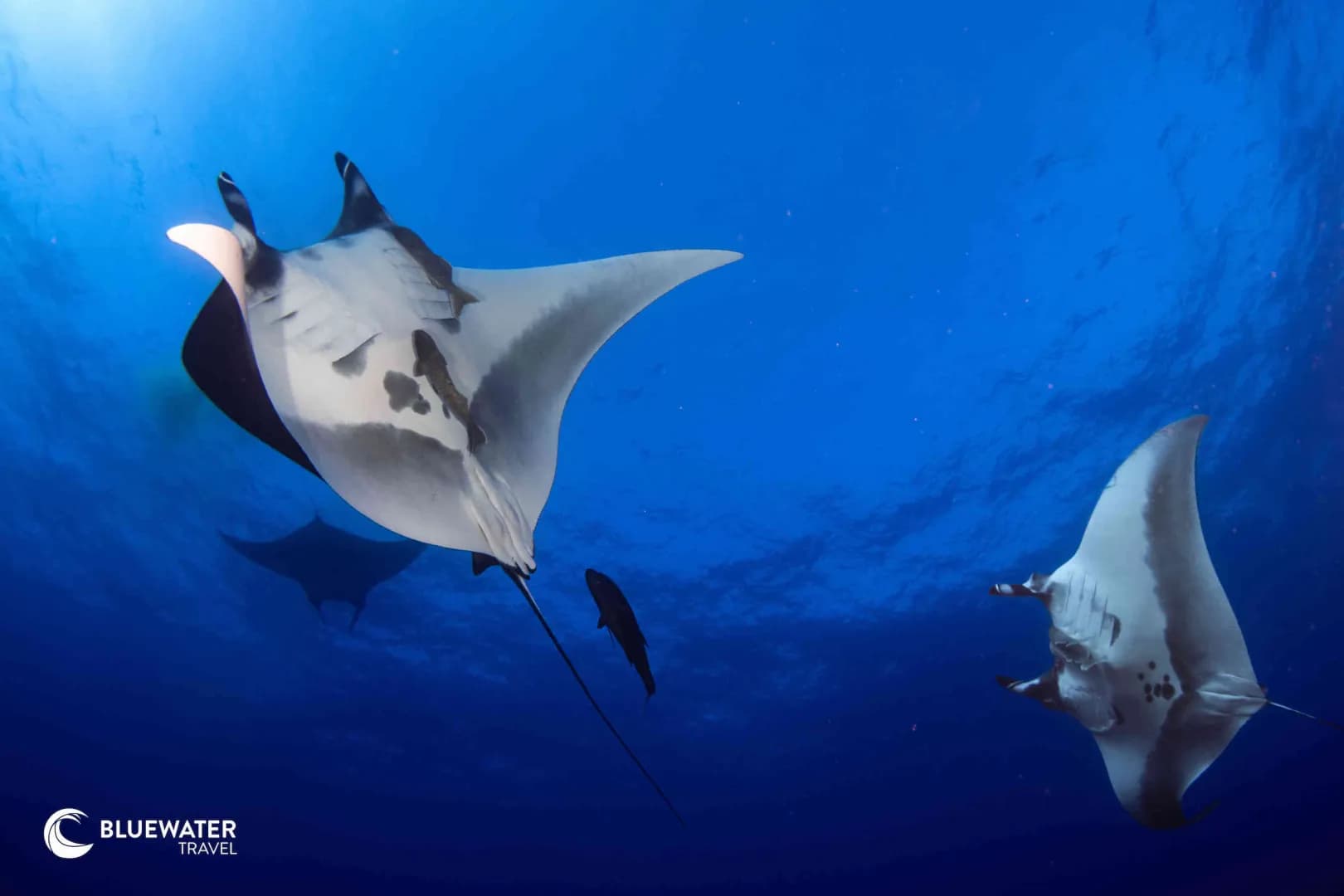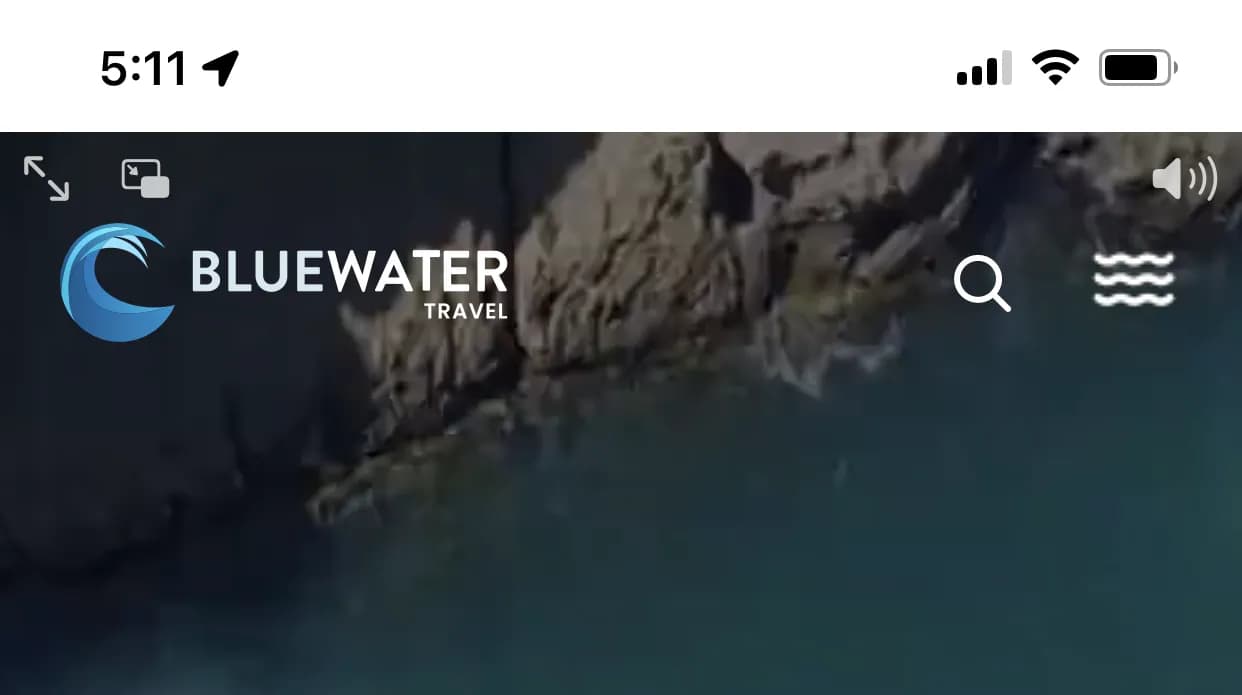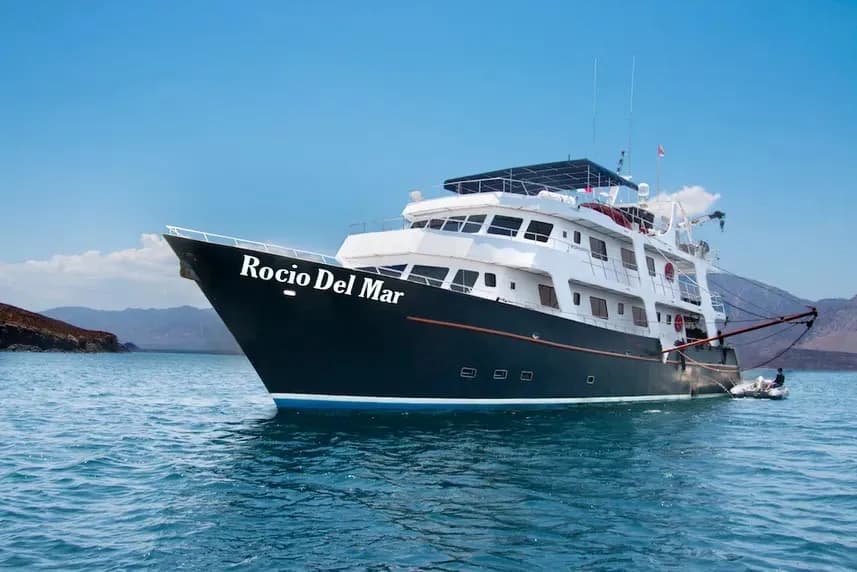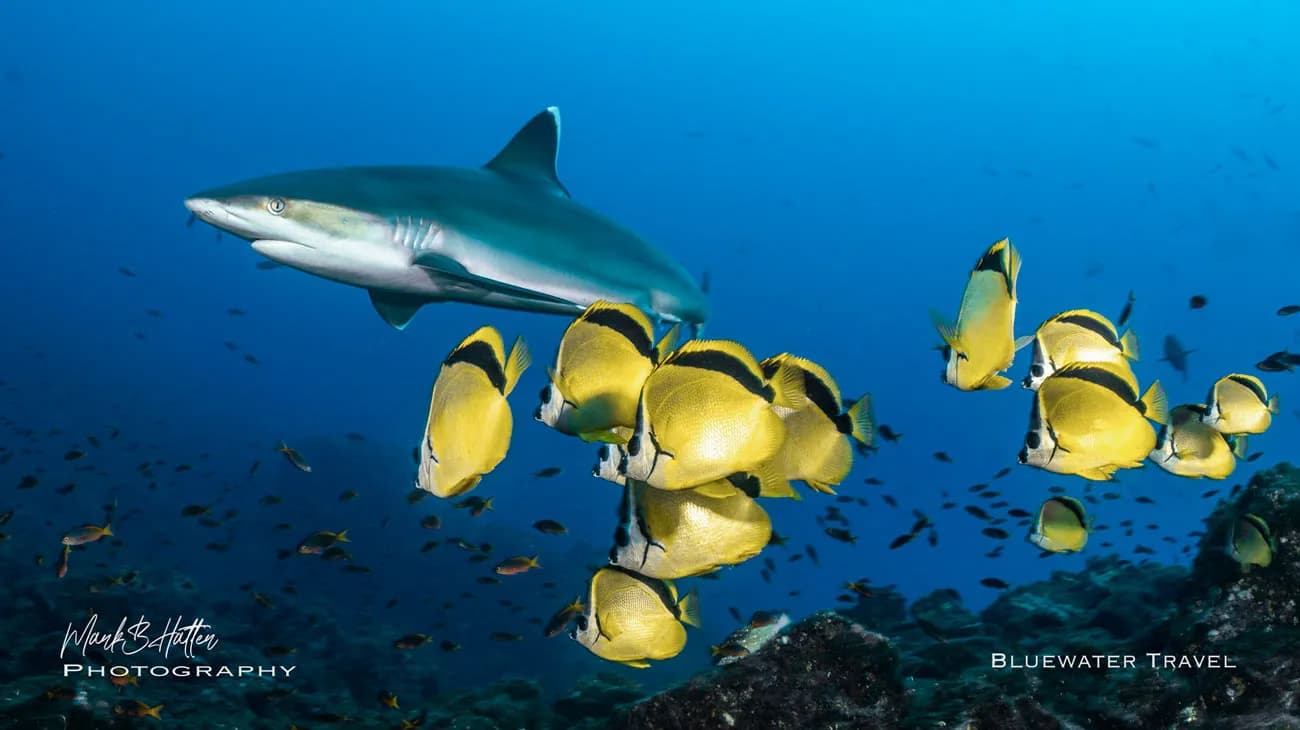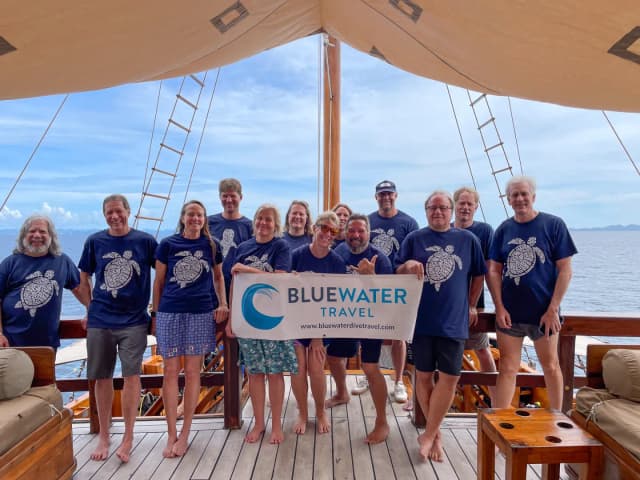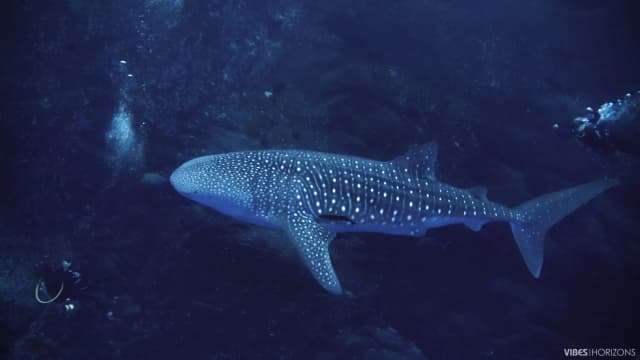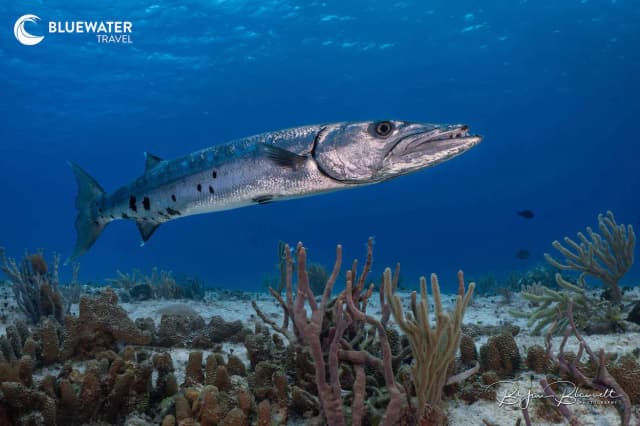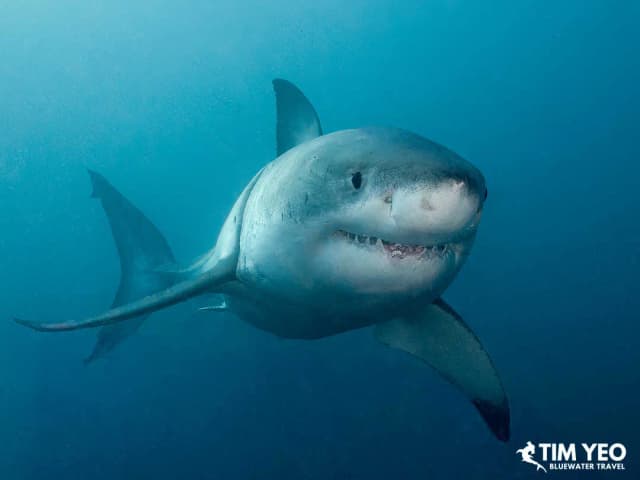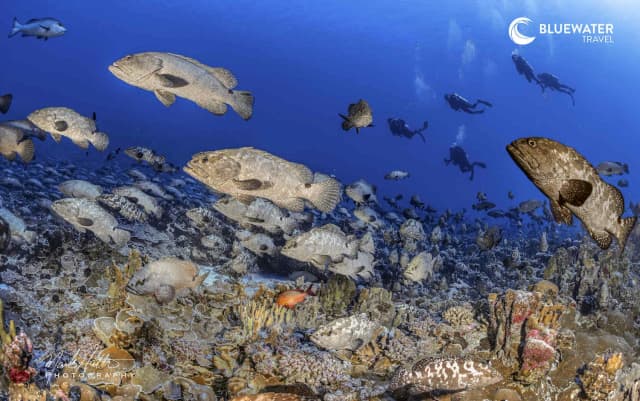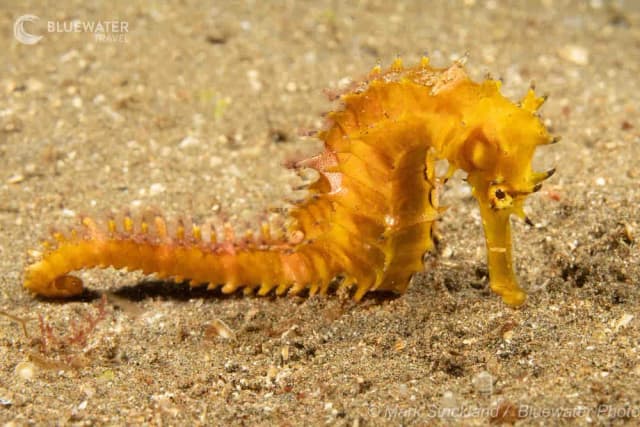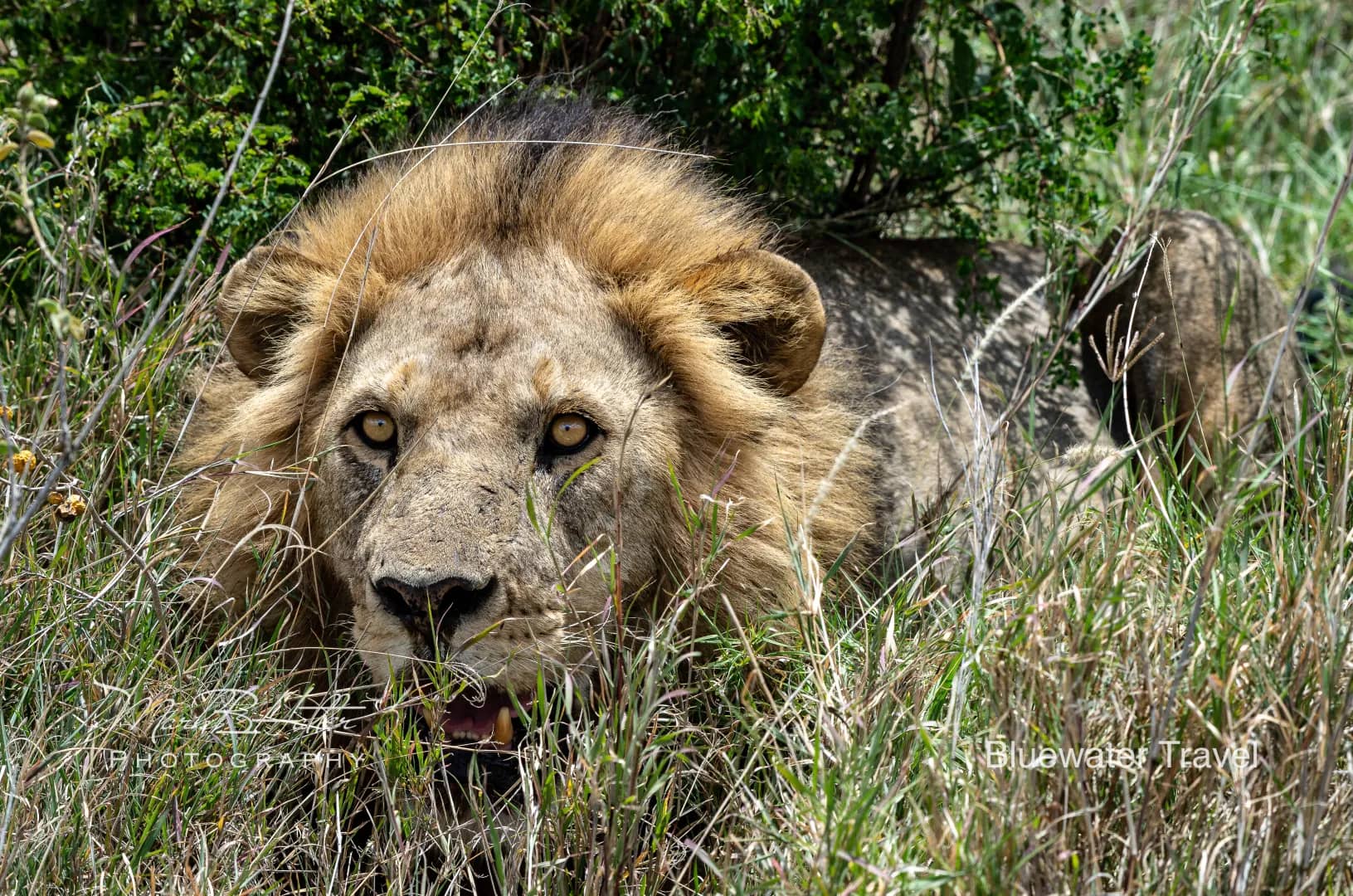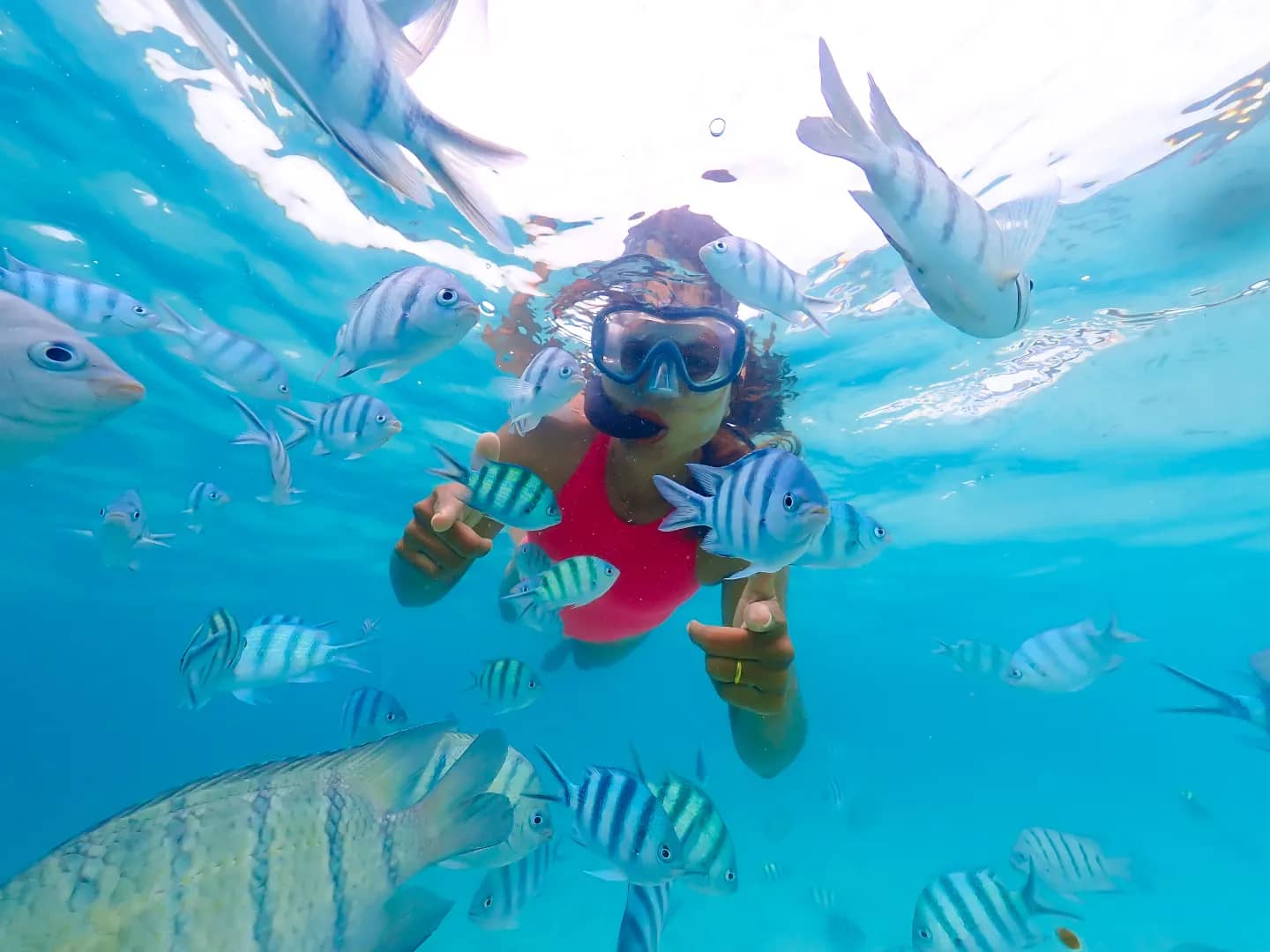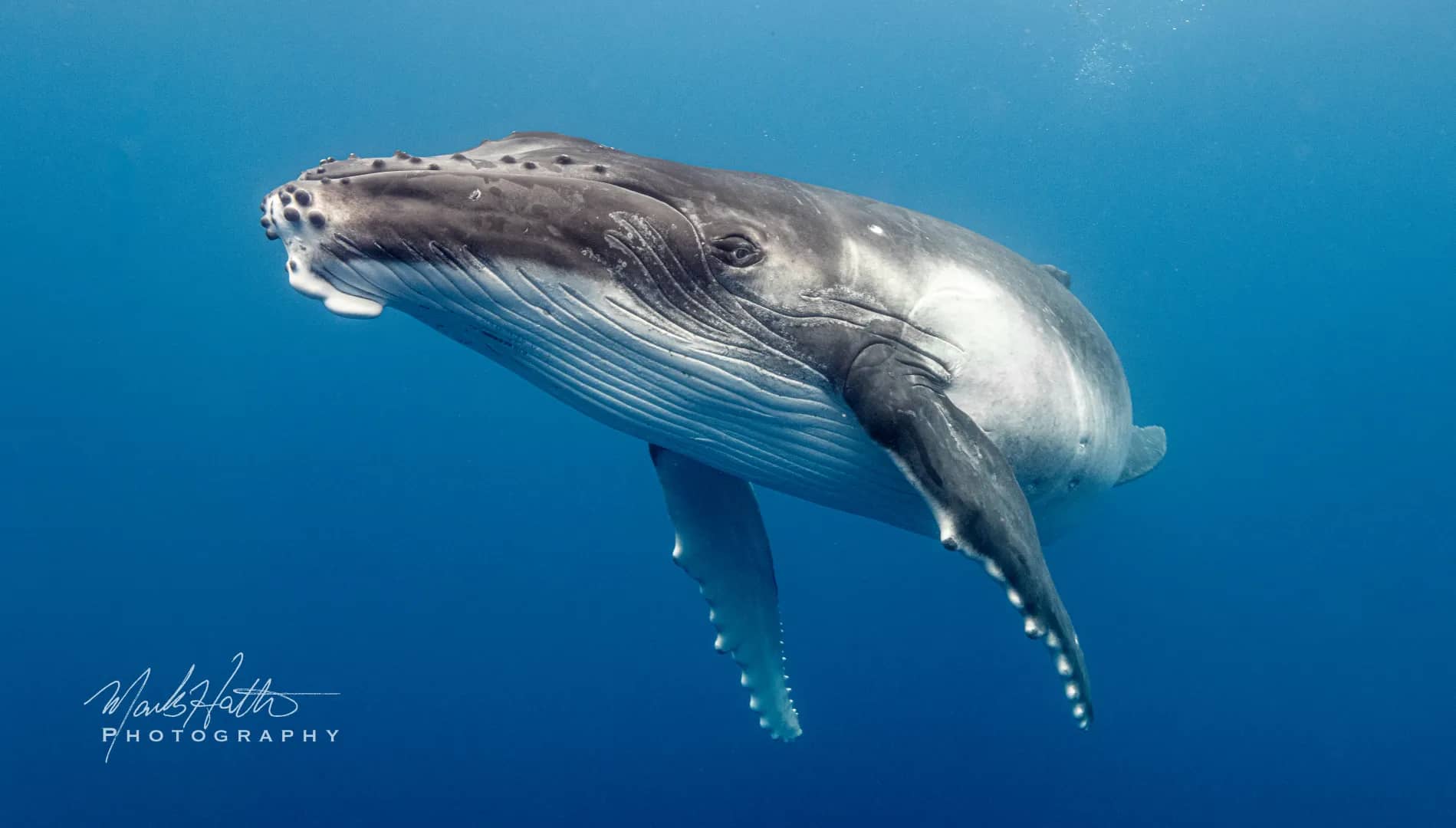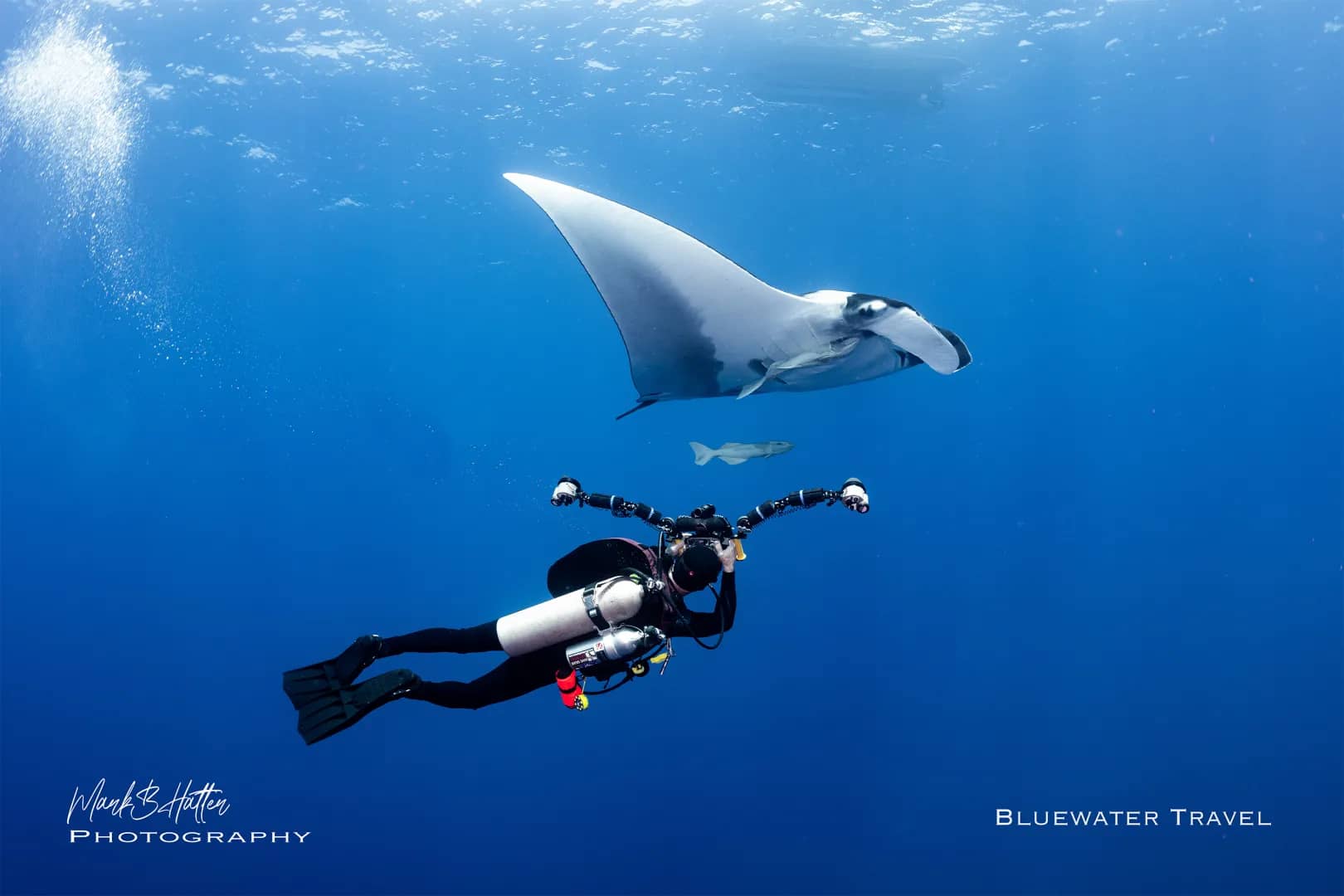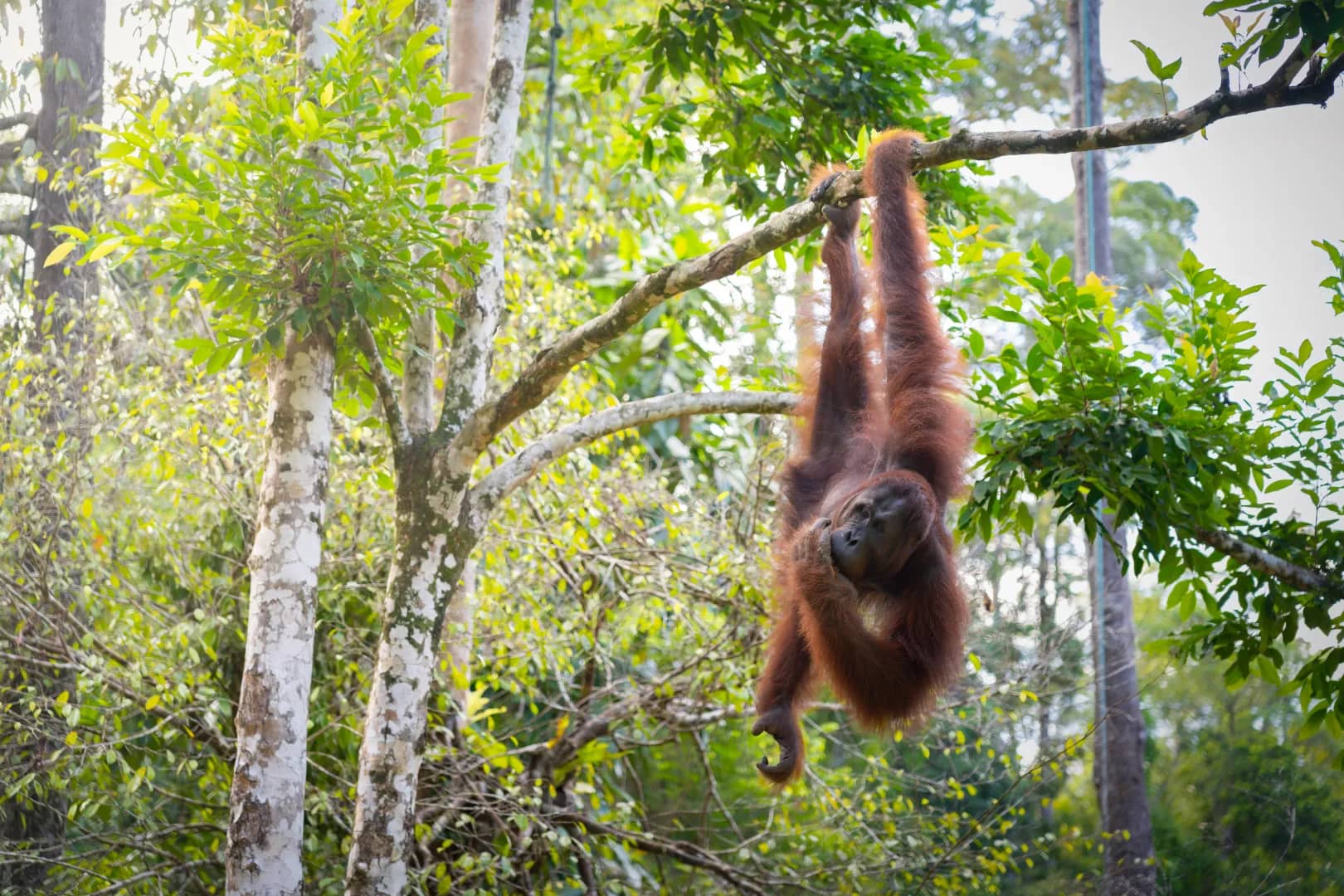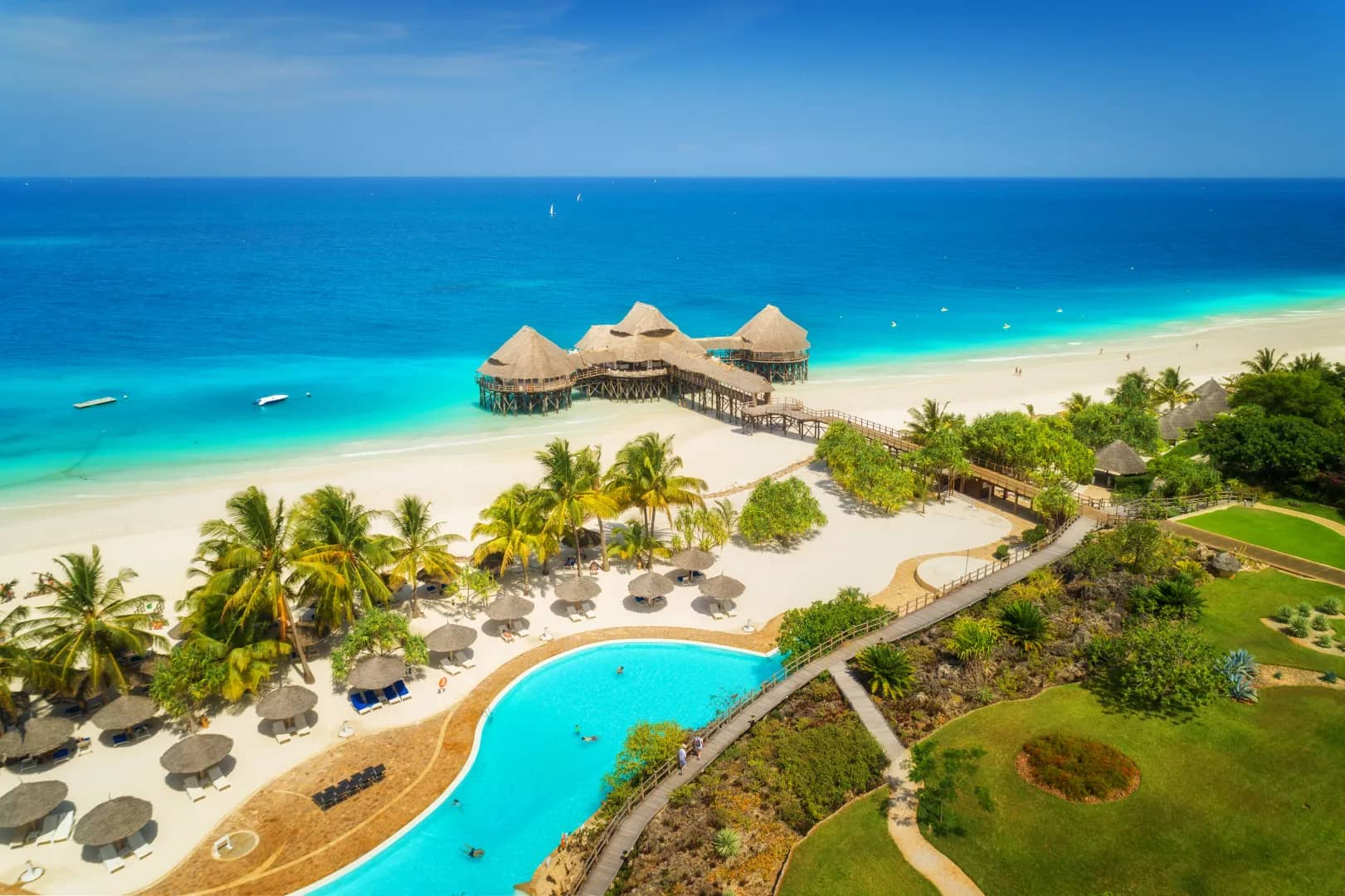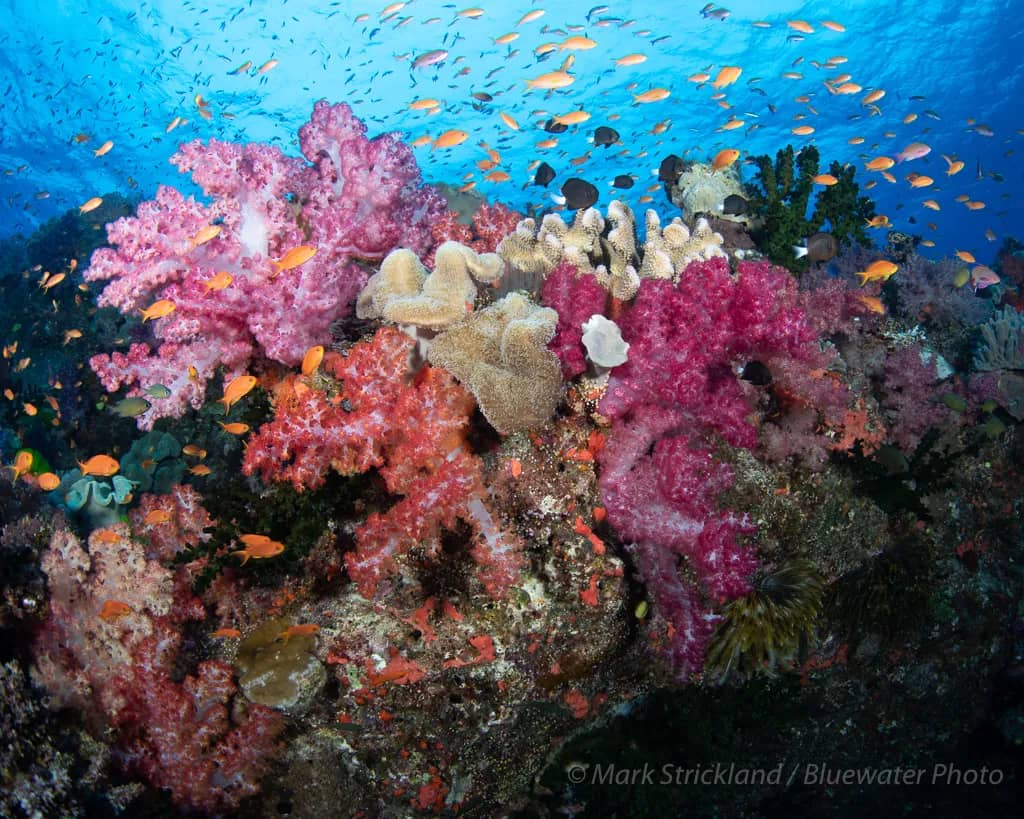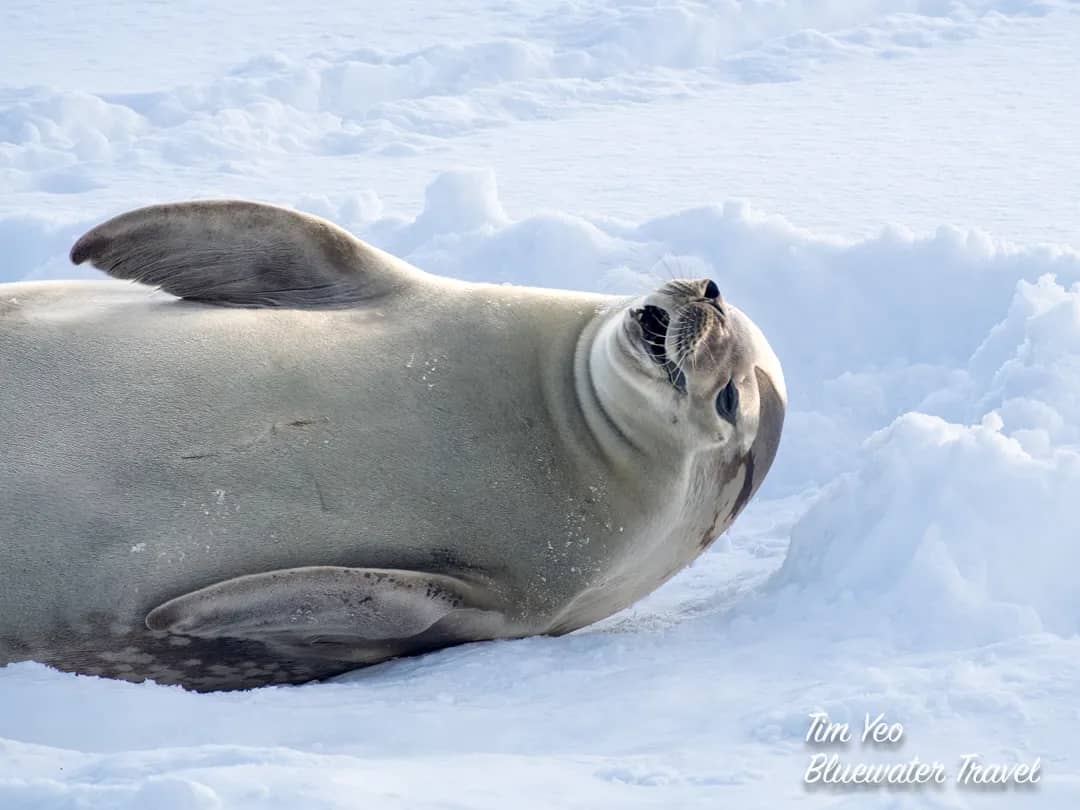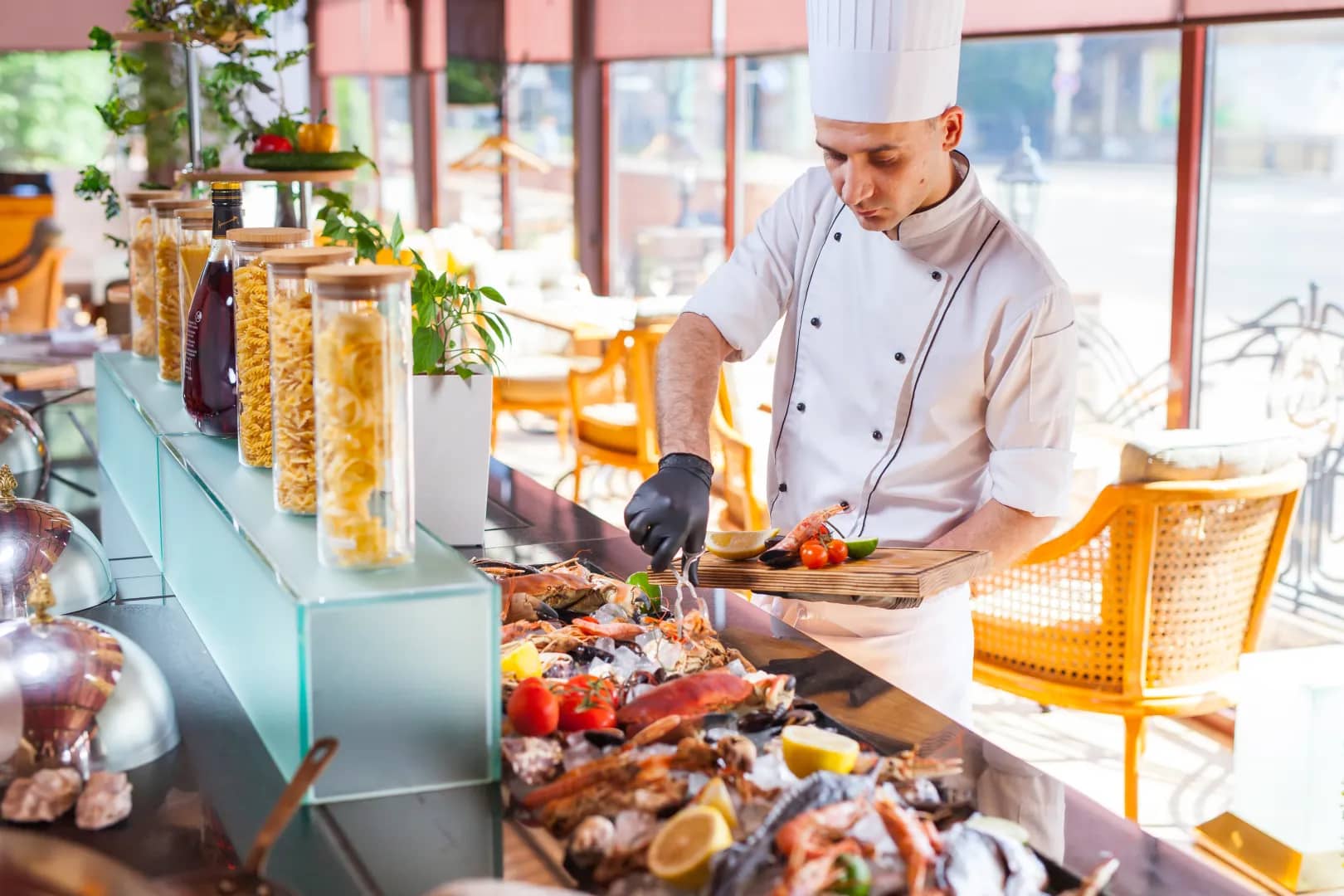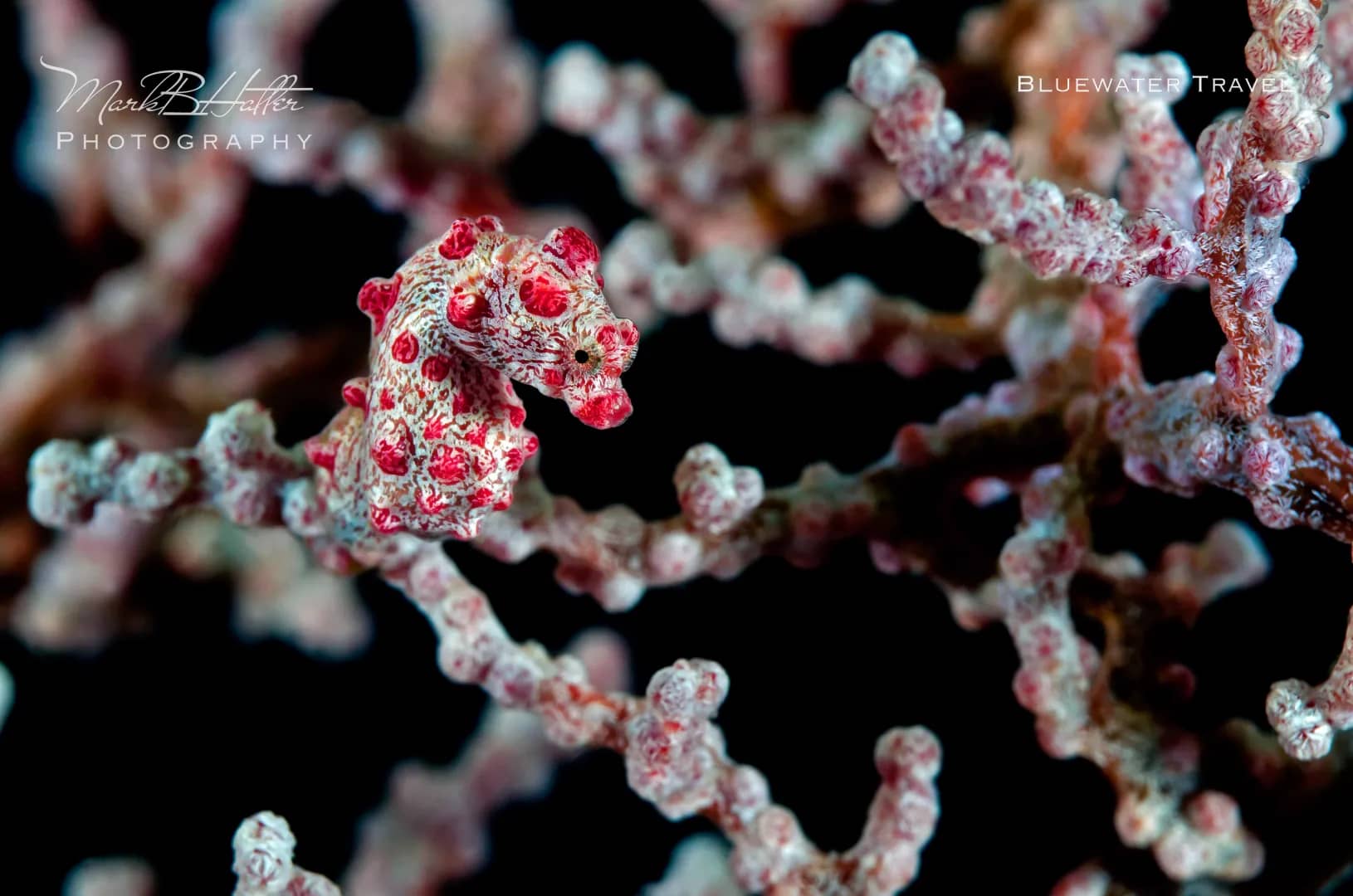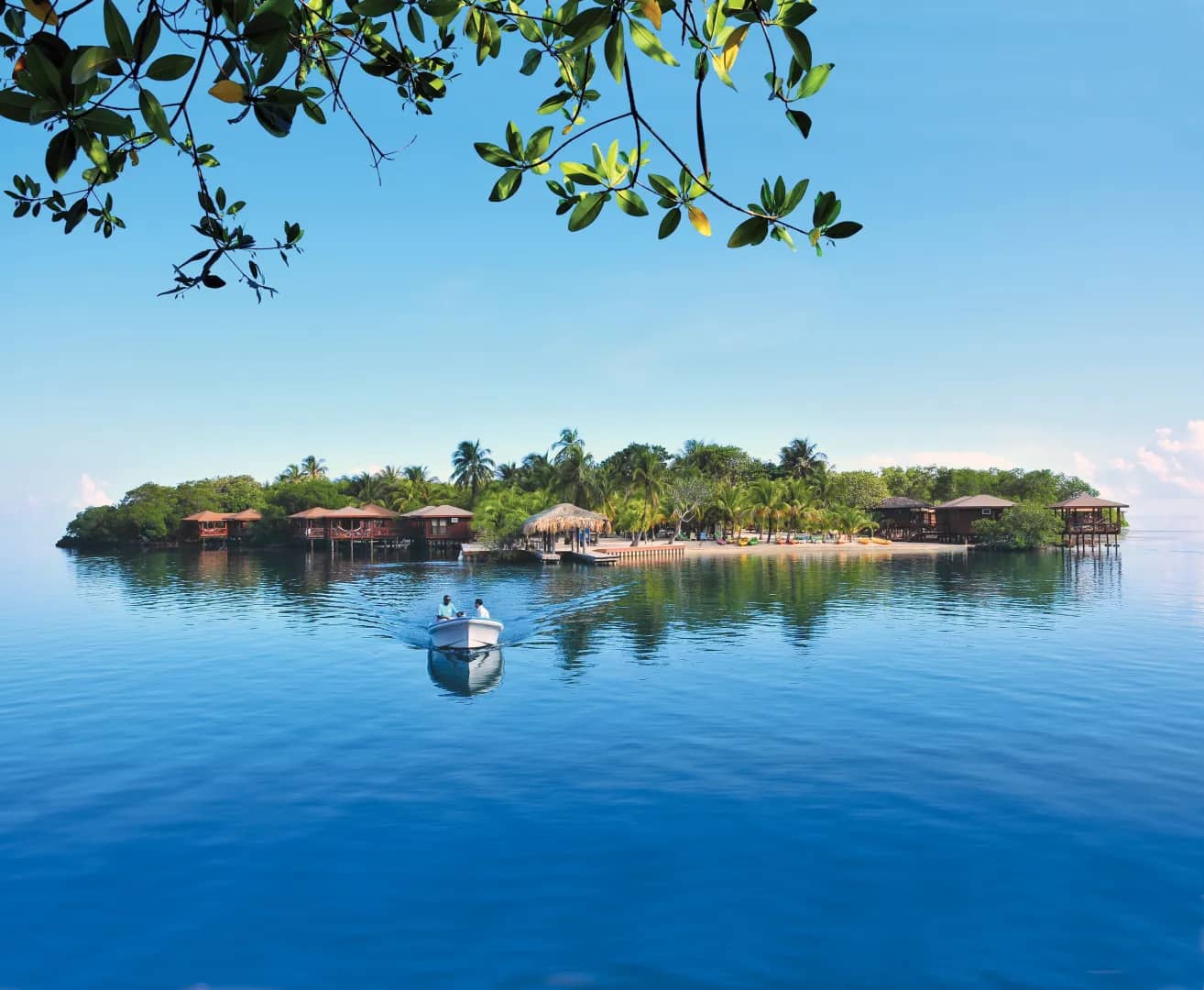Socorro 2025 Trip Report
Trip Leader: Nirupam Nigam
Photos by Trip Leader and Guests
Nirupam’s Underwater Camera Gear: Sony A1 II in an Ikelite Sony A1 II Underwater Housing, Sony 16-35mm f/4 PZ wide lens, Canon 8-15mm fisheye lens w/Sigma MC-11 adapter, and dual Ikelite DS 230 strobes
Nirupam’s Dive Gear: Mares Bolt BCD, Mares Avanti Quattro Fins, Bare 5mm wetsuit, Shearwater Perdix Dive Computer


The Volcano of San Benedicto
The primordial grunts and plaintive moans of whale song leave a lasting impression on those lucky enough to hear it. It reverberates through submarine canyons and resonates deep within your chest – an omnidirectional ambience in the pelagic blue of the Pacific. Every February, Bluewater Travel’s intrepid explorers have the opportunity to feel this ethereal music while surrounded by ocean giants. From oceanic mantas to dolphins to schools of hammerhead sharks, Socorro Island and the Revillagigedo Archipelago offer a once-in-a-lifetime opportunity to be surrounded by the world’s largest sea creatures.
A video recap of Socorro 2025 by Barbara Sullivan
The archipelago consists of four rugged volcanic islands, 285 miles from the tourism hub of Cabo San Lucas, Mexico. Last month, 17 travelers, adventurers, divers, photographers and one Bluewater Travel trip leader made the voyage aboard the Rocio Del Mar liveaboard dive boat. Over 10 days of diving, we were immersed in a world ruled by giants, where every dive offered the chance to witness something extraordinary. But beyond the encounters themselves, I was enthused by the group’s dedication—not just to experiencing Socorro’s marine life, but to capturing its essence through underwater photography and video. The group’s commitment to learning, refining techniques, and pushing creative boundaries was truly impressive.
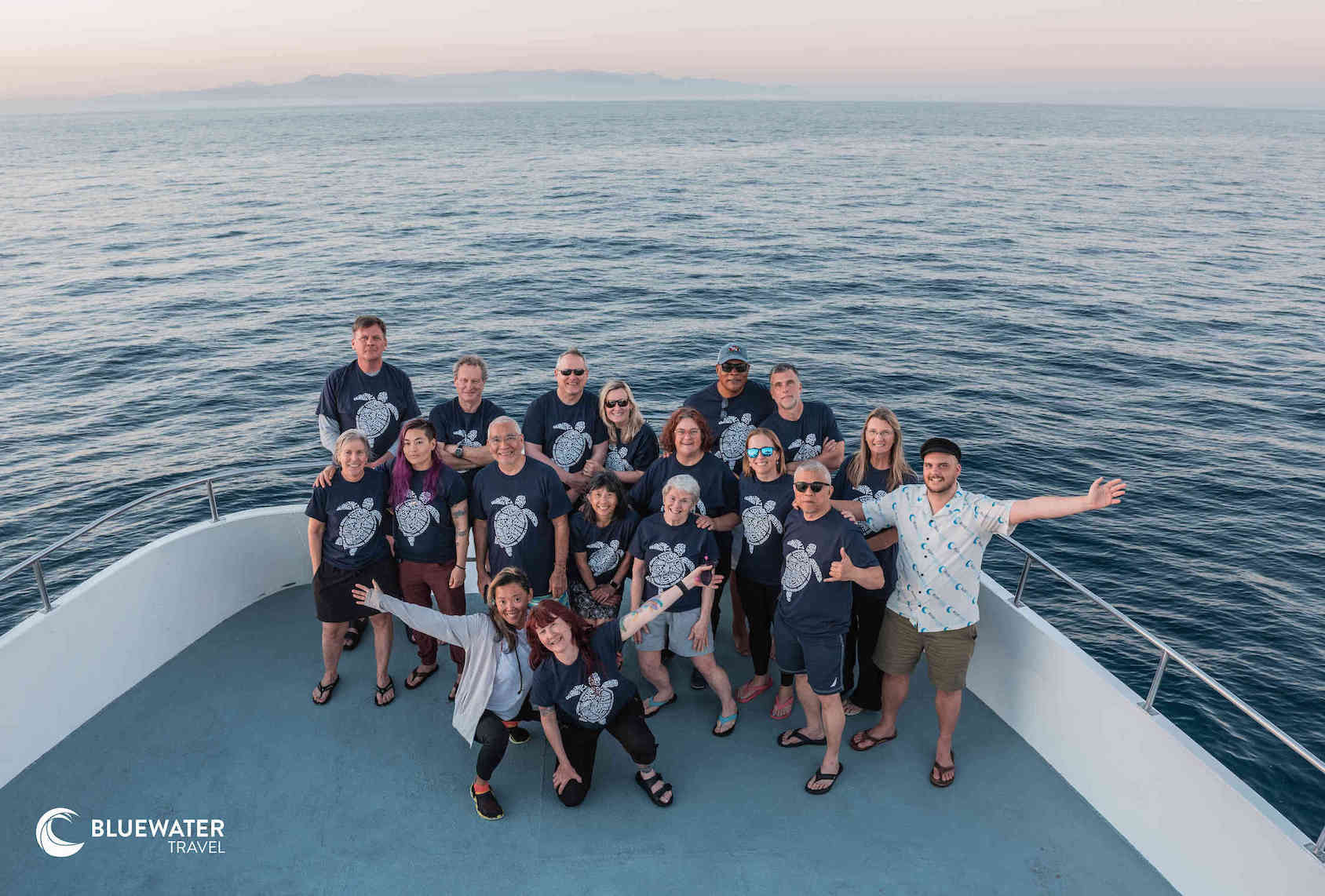

A Happy Group After a Week of Diving in the Revillagigedo Archipelago
By the end of the trip, everyone had honed their skills against the challenges of open-ocean diving—perfecting wide-angle compositions as mantas hovered overhead, timing shots to frame hammerheads emerging from the gloom, and adapting to the ever-changing conditions of the Pacific. Some of the best lessons in underwater imaging come not from instruction but from the ocean itself. This trip was a testament to that, with each diver embracing the balance of patience, instinct, and technical skill required to tell a story beneath the waves. There are few places left on Earth where the wild still moves freely, uninterrupted. For seven days, we had the privilege of being in the middle of it.


Manta Rays at the Boiler Bluewater Travel’s Photoworkshop & Recommended Lens Choices for Socorro
At its core, this trip was a Bluewater Travel underwater photo & video workshop where we welcome divers and photographers of all experience levels to learn a new way of appreciating the natural beauty around us. Each day of the trip we hosted a lesson or image review centered around the diving and educational desires of the guests – ranging from editing courses on Adobe Lightroom and Premier Pro to presentations about photographing sharks and quick action. A wide range of photosystems were brought ranging from a smartphone in the SeaLife SportDiver Housing to the Nikon Z8 with the Nauticam FCP to the human eye! We catered individual lessons to each person’s camera including one on using the OM System TG-7, TG-6, & TG-5, one on the Sony A6000 series cameras, one on the Canon R10/R7, one on the GoPro Hero 13, and a lesson on the Olympus E-PL10. One of the most important points that I teach in any photo workshop is that any modern camera can produce amazing results. The gear you have matters much less than what you do with it. Our attendees proved this with their incredible content regardless of the camera system.
The most common question I’m asked before each travel with Bluewater trip is “what lens should I bring?” At each site, lens choice is critical to those with interchangeable lens cameras. In Socorro, I typically recommend carrying both a fisheye lens and rectilinear wide angle lens. If you have a Nauticam water contact optic like the Nauticam FCP-1 or WACP-C, that can be even better as it allows for greater flexibility and better corner sharpness. Even GoPros and smartphones can benefit from wet wide-angle lenses like the Inon G140 wide lens. Many of the dive sites this year featured schools of hammerhead sharks for which I recommend carrying a rectilinear lens with more zoom. Some sites, like the boiler were speckled with friendly Manta Rays – perfect subjects for a fisheye lens. Although there is a wide variety of macro subjects in the Revillagigedo Archipelago, I wouldn’t recommend bringing a macro lens as you will certainly regret it when you have a manta ray swimming overhead!


The Sony A1 II in an Ikelite A1 II Housing Being Used in the Field for the First Time
Day 1: The Crossing
Traversing the distance from Cabos San Lucas to our first dive spot – San Benedicto Island – takes roughly 30 hours by boat in conditions ranging from glassy to ugly. Although the conditions in this crossing were benign but windy, many were thankful for carrying Bonine and Dramamine. The Rocio del Mar is fortunately equipped with stabilizers that make the crossing smoother. For many guests, the crossing to San Benedicto was like cramming for a test in preparation for the incredible encounters ahead. We covered an intro to underwater photography, photo editing, wide angle topics, and everyone’s individual camera from sun up to sun down. The Rocio del Mar has plenty of lounge space on the top and middle decks as well as a TV/snack room with indoor air conditioning and couches. The TV room is the perfect place to give workshop presentations. That said, there was still plenty of opportunities to rest and enjoy the legendary food of the Rocio Del Mar and banter with the legendary crew.
Day 2: Mantas at the Boiler
Trips to Socorro are often defined by the coordination and dive schedule of other boats. As we approached San Benedicto Island, we found that the famous Boiler dive site was empty for the taking! Hopping at the opportunity, we set anchor and got ready to dive early in the morning at 7:30 am. We split the group into three dive groups to keep the dive deck clear for a single group to set up at one time. The Rocio del Mar is run like clockwork – with each group getting into a panga, one after another, and taking a short ride to the dive site with a backroll entry into the water. There was still plenty of time at the surface to test our weighting and have our cameras handed to us.


A Manta Ray at the Boiler by Kieth Mash.
First place winning image for our underwater photo contest The vertical, dramatic topography of the boiler is unmistakable. Its beautiful striations complement the Rorschach patterns of the eight giant oceanic manta rays that greeted us. The mantas, often attracted to divers' bubbles, hovered overhead and swam effortlessly in acrobatic loops around each other and the divers. Patient divers were rewarded with curious close passes by the manta rays – who seemed to enjoy diving with us as much as we enjoyed diving with them. It became clear to us that Manta Rays truly are the most intelligent fish in the sea, as is often speculated by the scientific community.
Day 3: Sharks and More Sharks at El Cañón
After a full day of diving at the boiler, we continued to travel against the grain of dive boats, just around the corner to El Cañón (aka, The Canyon). The Canyon is a submarine ridge that sits at the base of a prehistoric volcano. The wind produces a thin smokescreen of ash from the most recent eruption in 1952. As you sink into the clear, azure water, you are almost immediately greeted by the largest diversity of sharks I’ve seen in a single location. Our groups swam along the ridge and approached a deep shark cleaning station. The key to successfully photographing the sharks there is to have the dive group place themselves in a circle at the base of the cleaning station. If you hide behind a rock and keep your attention focused on your camera, the sharks will relax and feel comfortable getting quite close. We spent the day photographing circling silvertip sharks, white tip reef sharks, Galapagos sharks, silky sharks, and even the occasional scalloped hammerhead shark.


A school of hammerhead sharks photographed by Emily St Germaine
After our third dive, one diver unfortunately suffered a medical issue that the crew quickly and professionally addressed with the help of very generous divers who are in the medical profession. As our affected diver began to recover we quickly notified the Mexican Navy and diverted our route to the Naval base on Socorro Island. Thankfully, the Mexican Navy and the doctors on board our vessel confirmed that the diver would recover, and she could continue onward for the rest of the trip dry, but safe.


A Galapagos Shark visits the shark cleaning station at El Canon
Day 4: Punto Tosca
We began our Socorro Island adventure at Punta Tosca – a rugged volcanic finger of rock that extends out into the Pacific. At the base of the finger is a deep submarine canyon that large pelagic animals, like whales and whale sharks, use to traverse the open Pacific. The first dive of the day was a disappointment as each group was met with limited visibility, heavy ocean swells, and wind. But as with all the diving in Socorro, things can change in a heartbeat! As the day progressed, we were met with exceptionally friendly and curious manta rays that kept coming to play with divers. A pod of dolphins quickly and briefly passed by one group of divers, almost as if to see what they were doing. A school of parrotfish ambushed the sea floor and dined on the small bits of coral that dotted the rock wall. But the crowning moment of the day was when group B began to hear a deep rumble in the water around them. It was a rumble intertwined with the deep moan of a male humpback whale. As it seemed to get closer, we could feel the sound permeating our chests. Everyone looked around, tentatively expecting a large mass to materialize out of the murky blue. And much to our delight – it did! For a moment, a small humpback whale curiously swam by each diver group B and disappeared into the blue with Manta Rays in tow.
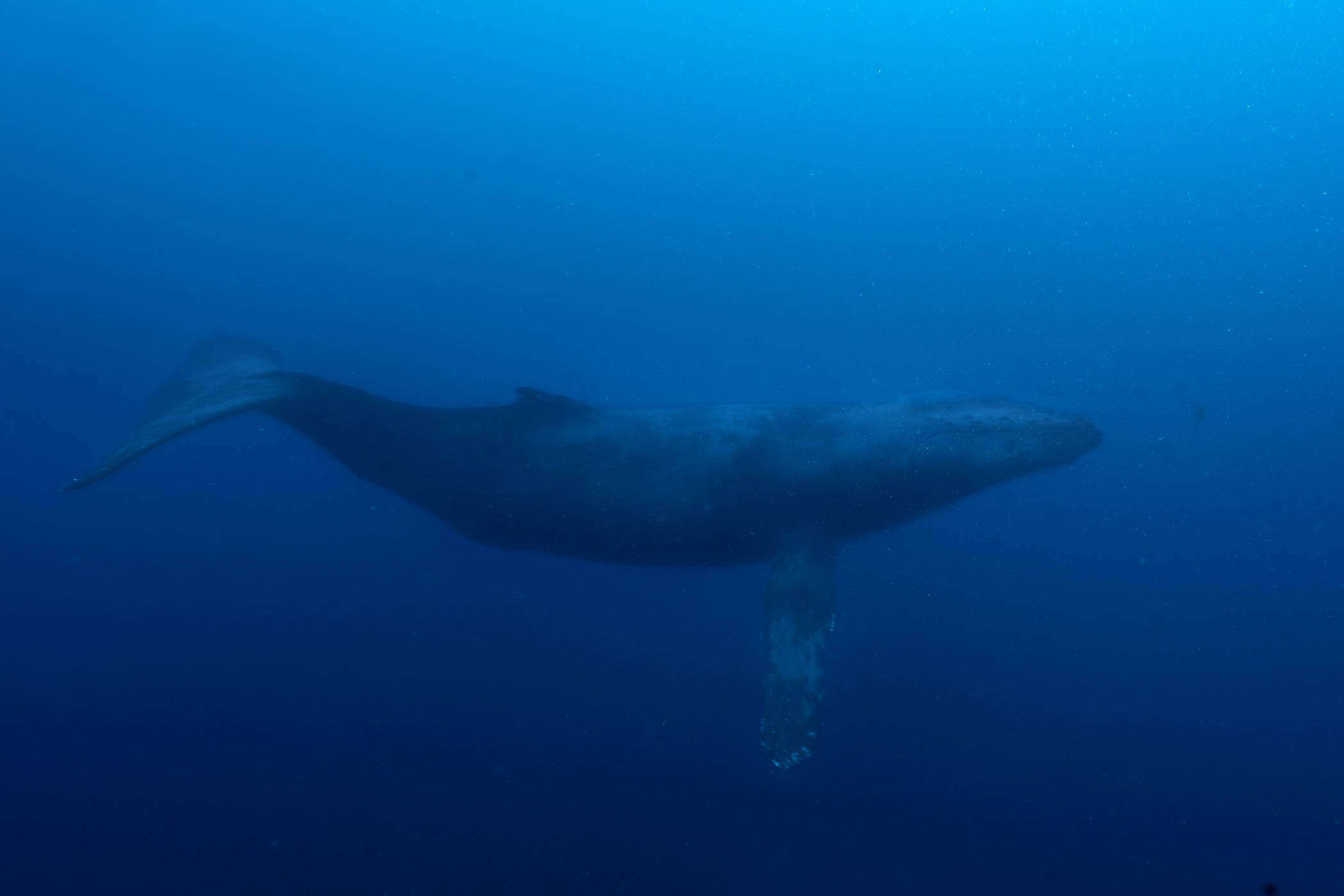



The fearless Jerson – divemaster of group B – photographed with a slow shutter motion blur affect by Ariel Gliboff
Day 5: Cabo Pierce
The next morning we arrived at Cabo Pierce - the most popular dive site on Socorro Island. As with Punta Tosca, it is an exposed volcanic finger of rock. Though the visibility here was better, on this trip, there were fewer animal encounters. Some groups did get a chance to see a large school of hammerheads up close, as well as a couple of passing dolphins. For the rest of us, the dives were a good opportunity to enjoy the wide diversity of reef fish on the island. Some lucky divers had the opportunity to watch an energetic octopus on the hunt. Photo 5: Max Weinmann photographing dolphins with a nearby manta ray by Jessica Albietz


The same moment of a pass by dolphins photographed by Max Weinmann
Day 6: Roca Partida
Roca Partida is a legendary dive site. It’s a relatively small, bifurcated rock that descends 700 feet vertically through the ocean to the sea floor. As we approached the site, it was easy to feel alone in the vast Pacific – a half-day's ride from the nearest island in the archipelago, with no other vessel in sight. As with recent days, the morning began with a stiff wind and a moderate swell. Thankfully, after five days of diving, our dive groups had their diving technique and buoyancy dialed down and were ready for true pelagic diving.
Photo 8: The tails of white tip reef sharks photographed by Natasha Overbo As we backrolled into the water from the pangas we could see the wall of Roca Partida descending deep into the blue, dotted by hundreds of fish of all shapes and sizes. Small rock ledges cut into the wall by swell and sea urchins are a resting place for dozens of white tip reef sharks. These reef sharks jostle for limited space, and often pile up into large shark “cuddle puddles”, as our divers liked to say. We practiced slowly approaching the white tip reef sharks and adjusting our lighting to illuminate them in difficult lighting conditions with complex backgrounds. The trick is to not get too close or the sharks begin to move off the ledge.


Whitetip Reefsharks at the ledges of Roca Partida photographed by Eliel Alfons.
The second place image for our underwater photo contest. After everyone had their fill of photographing sharks, we moved to the edge of the rock where large schools of jacks consolidated together to hunt for food in the prevailing ocean currents. Though the currents and diving conditions were trickier at the outer edge of the rocks, we were greeted with a large diversity of fish and friendly manta rays.


A school of jacks at Roca Partida photographed by Patti Lowe


A shark swims through a school of fish by the wall at Roca Partida
Day 7: The Grand Finale at El Cañón
Our three dives at Roca Partida ended in the early afternoon, allowing us to spend time editing photos and videos in preparation for the final photo contest. During this time, the captain informed me that there had been very few boats at the Canyon for the last couple of days and there would be no boats there tomorrow. We jumped on the opportunity to dive in an environment where the marine life is relaxed and comfortable after being undisturbed by other dive boats. It was the right call for El Canon ended up being the grand finale of the trip.


Dolphins photographed by Jennifer Price (L) & A creole wrasse hunting in the blue water by Pamela (R)
During the end of the first dive, it seemed as though the ocean had changed as we left the shark cleaning station. Every animal in the vicinity was on edge. The reef fish tensed up, with their dorsal fins rising. The sharks started to move in an angular fashion with their pectoral fins flexing downward. Suddenly, a huge school of bonita tuna darted past. It appeared as an endless silvery screen of fish moving at almost 30 miles per hour through the water. We immediately began to hear the high pitched clicks of hunting dolphin and sure enough, a pod of bottlenose dolphins appeared at the tail of the school of bonita. As they saw divers, they briefly diverted their hunt to check us out and then swam swiftly back to the main event. Large, yellowfin tuna followed closely behind and were subsequently followed by the wolves of the sea – Galapagos, silky, and silvertip sharks. Our sagacious divemasters knew to group us closer together as the predators went after their prey, and we safely watched the drama progress. As the postmeridian sun filtered through the water, the ocean calmed and so did the sea creatures. Our remaining dives were spent exploring the cleaning station and learning how to approach the shy schools of hammerheads that circled the station. Despite their cautious nature, many divers in the group managed to capture close photos of the hammerheads.


A hammerhead closely approaches Barbara Sullivan at the Canyon
The sun set on our final day of diving, and we pulled anchor, beginning our daylong journey back to Cabo San Lucas. Our enthusiastic group of underwater photographers and video shooters made the most of the time. We spent the day learning more about optics, editing photos and videos, and sharing the knowledge that we learned during this impactful experience. During our final underwater photo and video contest we learned that it’s always good to know the judges (the crew) and their tastes. The winning images looked surprisingly similar to the black and white images that were mounted in the galley of the ship! But the results of the photo contest were inconsequential as we all came away with a better understanding not just using our gear, but appreciating the amazing life the oceans have to offer.
Still interested? Read about our previous trip to the Socorro Islands.


